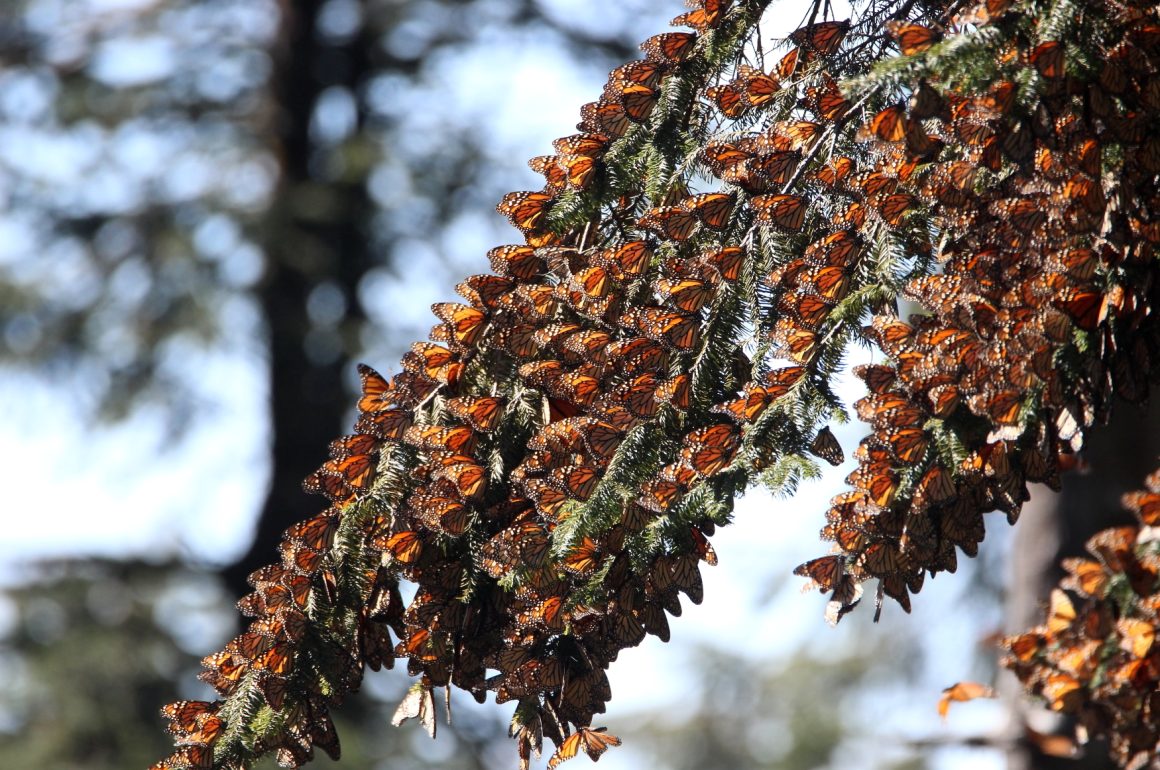
The migration of North America’s Monarch Butterflies (Danaus Plexippus Plexippus) is one of the wonders of the natural world. Unlike our feathered friends’ migration, these butterflies somehow migrate over the course of three or four generations, with two or three generations moving north by stages from Mexico (and some other sites) to as far north as Canada, while a single generation makes the return trip. The northward-travelling butterflies live only a few weeks, but the southward-travelling and overwintering butterflies can live up to nine months. As of this writing, scientists have not determined what specific mechanisms regulate this highly irregular migration pattern.
The most important sites for wintering Monarch Butterflies are all in the Mexican state of Michoacán, where I have lived for 30 years. So it is that much worse that we, and I, had never gone to see them.
But my ornithologist friend Jonathan Vargas, who now also lives in Morelia, has been looking for interesting options for guided tours in our area. (He has already worked as a guide in the areas of San Blas and Ensenada, and has interesting projects in development for the biologically unique areas of Cuatro Ciénegas and the Islas Marías.) One of his plans was to look into combining tours to the winter Monarch grounds with seeing whatever birds the area offers. And I got to go along. My plan was to see whether it would be practical for my wife to make it up the mountain and see the butterflies, as well. (It will be practical, and we will do that, soon.)
To get to the first point, the butterfly show really is that spectacular. Well above 3,000 meters (10,000 feet), thousands of butterflies cover the area’s oyamel trees, also known as Religious Firs. Others swirl around their spectators, and still others feed on the site’s many Salvia flowers.
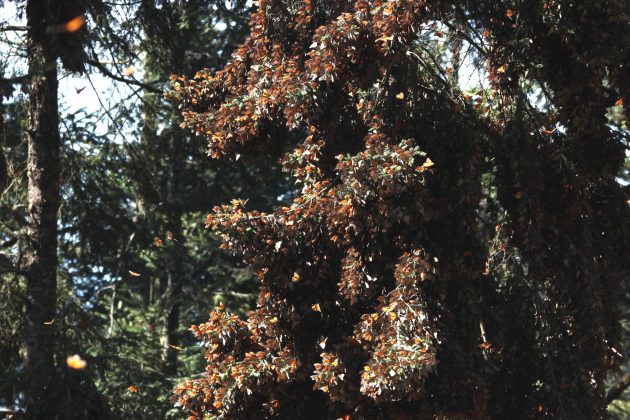
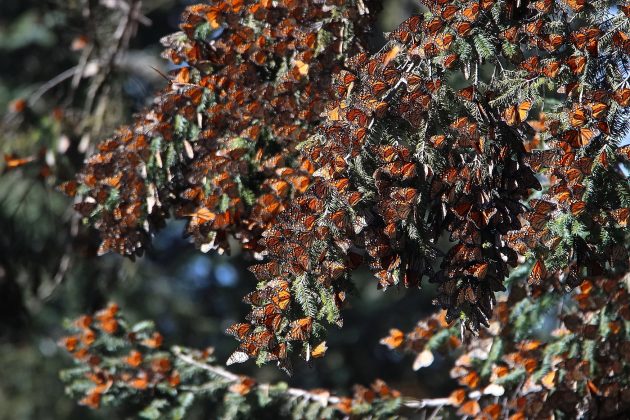
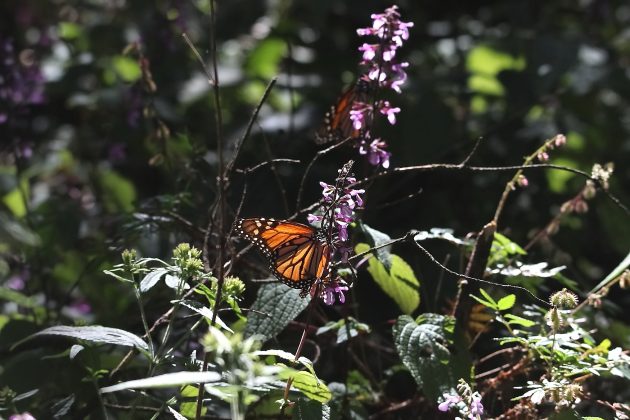
It wasn’t until I looked at my photos at home that I noticed that all the butterflies had oriented themselves toward the midday sun. At 3,400 meters, even though we were slightly further south than Puerto Vallarta, it was cold enough at night that we could pick up chunks of ice that had formed in the ground. It seemed odd that butterflies would fly all the way from Canada, just so they could spend the winter at such a cold altitude.
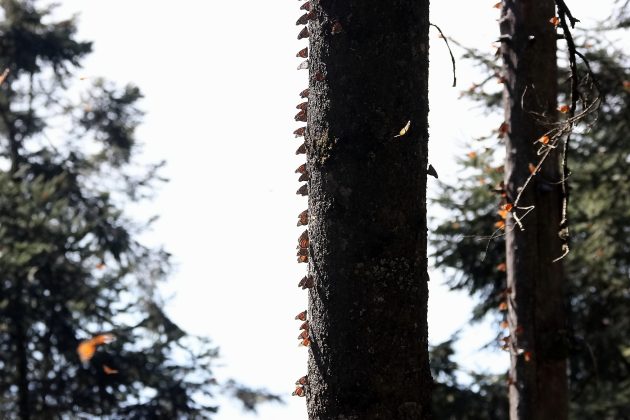
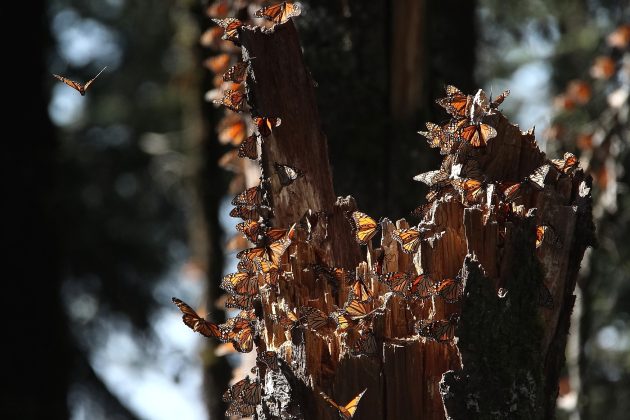
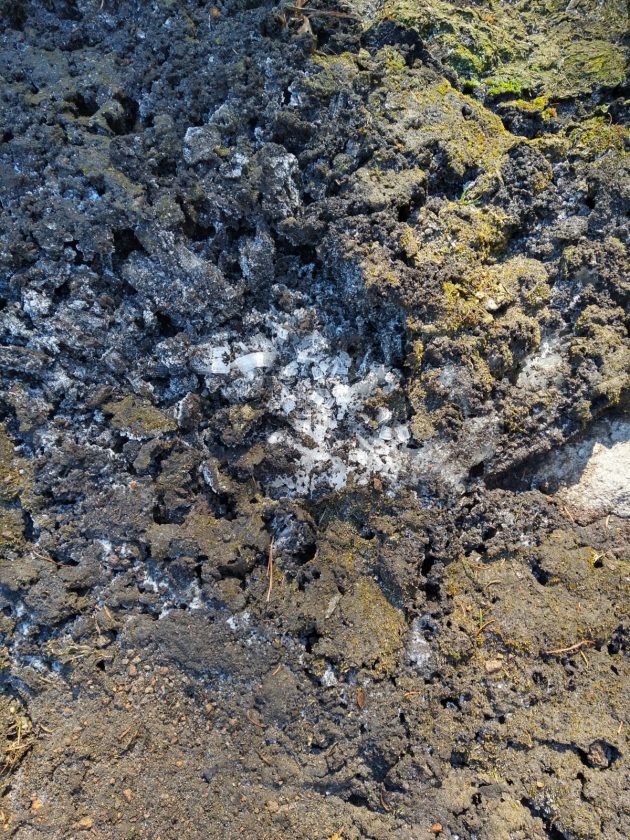
That’s ice expanding out of the forest soil.
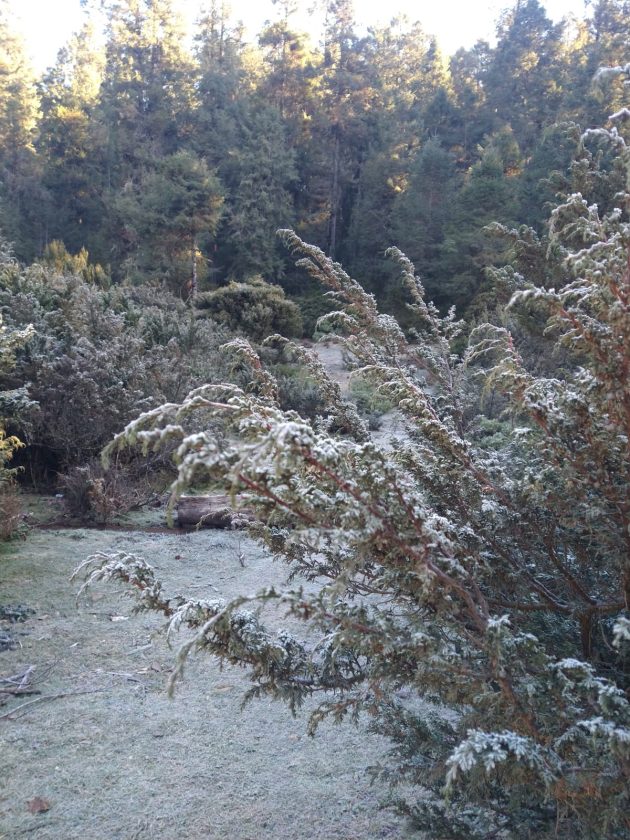
This sort of early morning winter scene may be normal up north; but in central Mexico, not so much. (That’s frost, not snow.)
But can one also see enough birds at the Butterfly Sanctuaries to give added value to the trip? Our one day there suggests that one can. In a single long day, we were able to observe 45 high-quality species, including the Red and Golden-browed Warblers, Pine Flycatcher, Green-striped Brushfinch, Band-tailed Pigeon, and four hummingbirds (Rivoli’s, White-eared, Broad-tailed, and Mexican Violetear).
The endemic Striped Sparrow was common around the first Butterfly Sanctuary. This unusual and handsome sparrow can only be seen in southwestern Mexico, in meadows above 2,500 meters, and I had not seen any for two years before this trip.
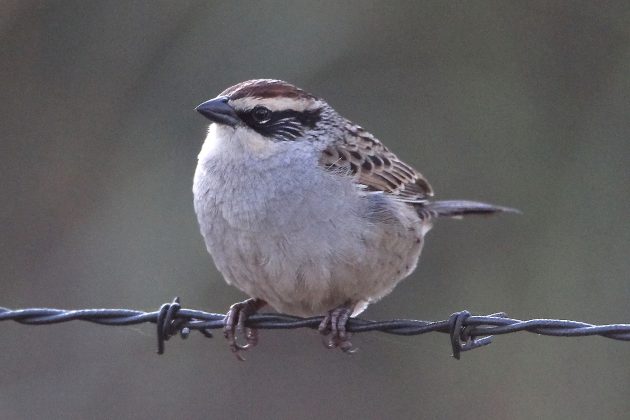
Yes, Striped Sparrows really are that chunky. Perhaps it keeps them warm.
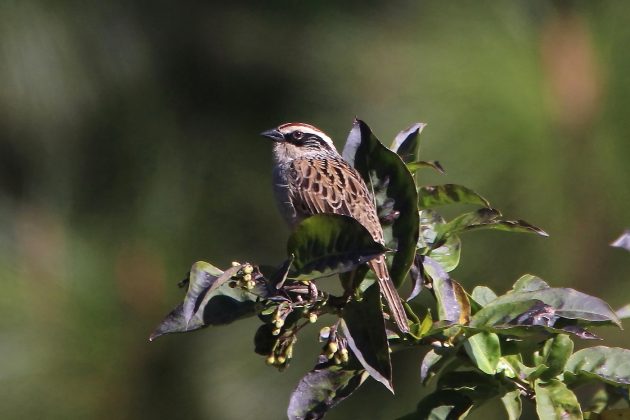
I was also pleased to find that the many Bluebirds around the Sanctuary entrance were all Western Bluebirds. Our Bluebirds in Morelia are all Eastern. Oddly enough, in central Mexico, you have to travel east to find Western Bluebirds.
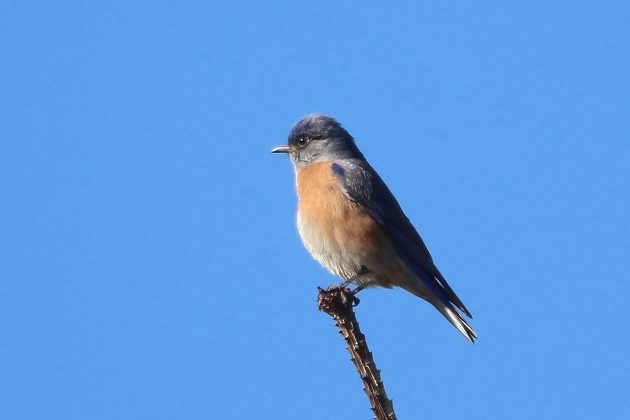
You know male Bluebirds are Western when the blue color covers their whole head, extending down their throat all the way to their breast. Eastern Bluebirds have rufous throats.
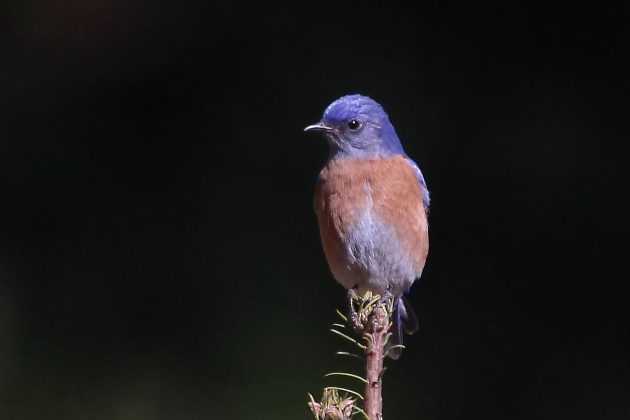
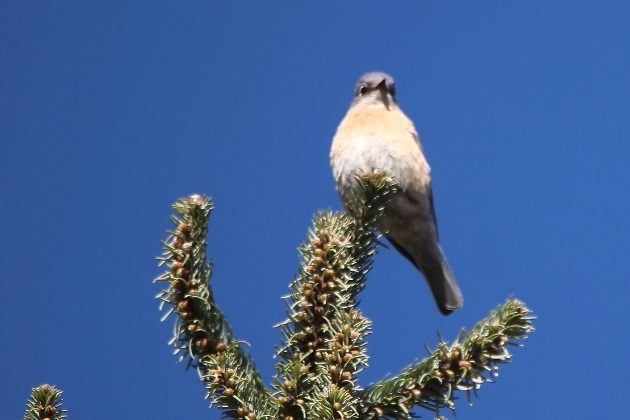
Female Western Bluebirds have heads that are almost gray.
On the way back to Morelia, we stopped at Cerro de Garnica, one of my favorite sites. By this time it was dark, and Jonathan wanted to check for owls. Sure enough, once the darkness was almost complete, we were able to dialogue with a Northern Saw-whet Owl. Lifer for me! And in the next town west, a Mexican Whippoorwill flew across the road ahead of us, which was a “Michoalifer” for Jonathan.
Our greatest hope for this area is to be able to create some summer birding tourism, as considerable tourism infrastructure has built up around the winter butterfly season, but from April to October it all goes unused. The locals who work in tourism and habitat protection seem very interested in this possibility.
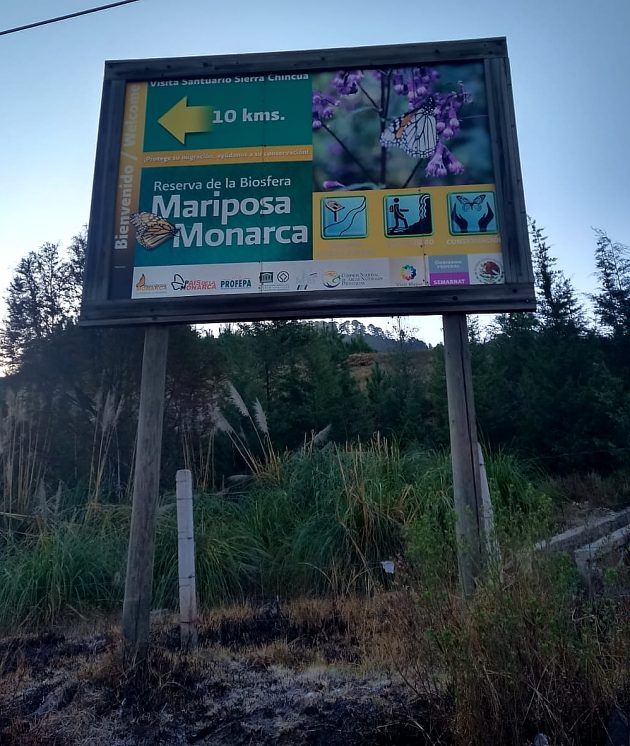
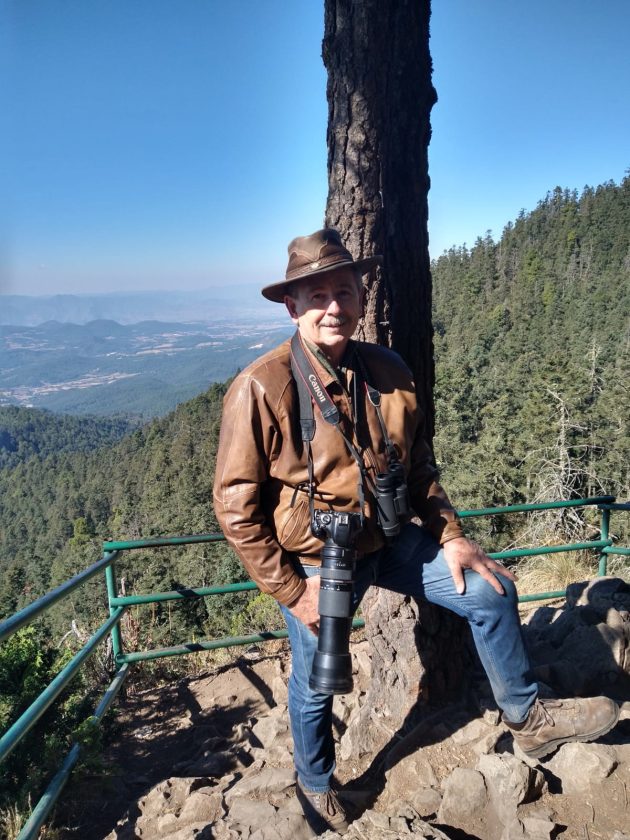


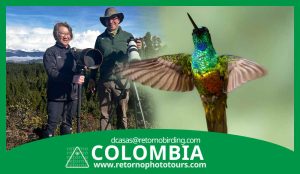




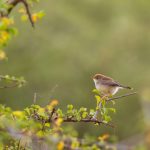
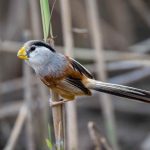
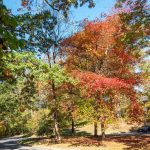

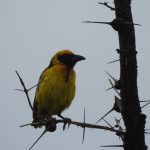
I watched migrating monarchs from my hotel room window in Monterrey once. A steady stream of butterflies passing while a steady stream of beers left my fridge. Seemed a good deal at the time but seeing these pictures I know there’s so much more to enjoy. Although you do fail to mention beer…